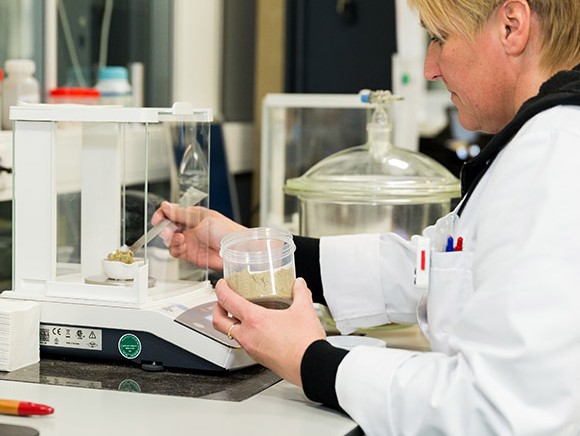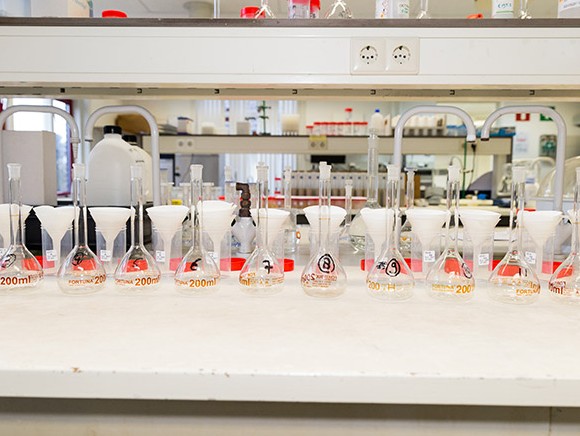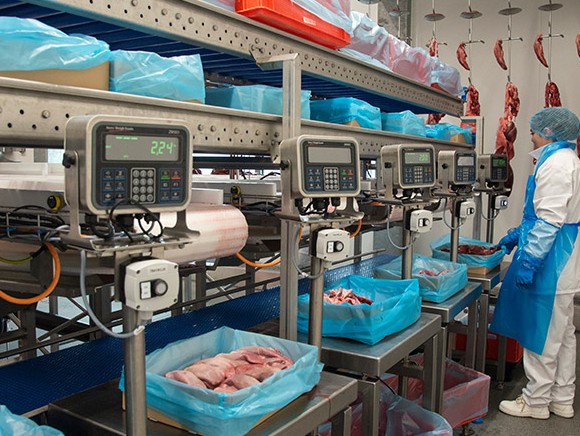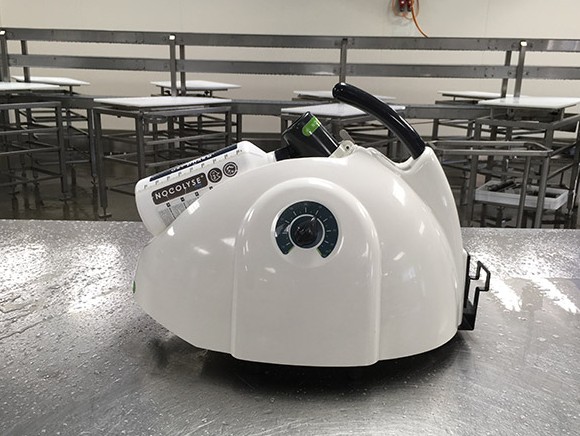
Bad news sells more newspapers than good, and that’s especially true in the case of food safety. The media have a field day when any shortcomings are discovered. In that respect, it’s better to keep your company out of the headlines. Here, from their own different perspectives, four experts provide tips and advice for guaranteeing food safety.
Every month seems to bring a new incident. For example, a headline from mid-May 2017, stated “More than 200 companies under tighter NVWA supervision for breaching hygiene rules”. It was a hot topic for a couple of days. So what’s going on? Between 1 January 2013 and 18 July 2016, the Netherlands Food and Consumer Product Safety Authority (NVWA) placed around 200 companies in the ‘retail and craftsmanship’ category under tighter supervision for breaches of hygiene rules. This conclusion is based on information in the audit reports which the NVWA released at the request of Dutch news broadcaster RTL Nieuws and industry organisation Foodwatch. The 200 businesses were repeatedly rated as ‘unsatisfactory’ for one or more aspects of the audit or performed so poorly that they posed an acute risk to food safety. This doesn’t do much to boost consumer confidence in food safety. Foodwatch is calling for the results of such audits to be made public immediately so that consumers can decide for themselves where or where not to buy food.
Not only consumers, but also other chain partners want to be able to make informed choices. Sjoerd Kanters, director of Riskplaza, sees the responsibility for food safety clearly shifting ever further upstream in the supply chain. “More and more food manufacturers and retailers are taking a proactive approach rather than waiting for the next food scandal to occur. Retailers are increasingly auditing their suppliers beforehand. For purchasing departments, it’s no longer just about finding the cheapest supplier; companies are starting to realise that such suppliers can end up generating much higher costs for the quality department in terms of testing and analysing the raw materials. One good example is industrial bakery company Borgesius. The directors have decided that they want to look beyond the mandatory two links upstream and two links downstream in the chain; instead, they want to know where the dangers lie from end to end. Borgesius has now even made it company policy to only do business with suppliers who are Riskplaza-certified. All its bakery facilities already hold BRC and/or IFS quality certificates. Over the course of this year, they will all also work towards Riskplaza certification.”
The Riskplaza certificate has gained in importance since becoming internationally recognised in December 2016; the organisation is now ISO 17021-certified. “Riskplaza certification enables companies to demonstrate that they have been fully audited for all raw materials; the food safety schemes are only based on taking samples. Hence, we are creating a pool of certified suppliers that manufacturers can deal with safely. If, as a manufacturer of end products, you don’t have food safety under control then the retailer loses confidence in you; that’s a very clear trend we’re seeing right now.”

Pieter Vos, director of Nutrilab, can identify with that last point: “We work for many different companies. We’re seeing that food manufacturing companies are successfully preventing contamination at the front end by demanding that their suppliers provide the right reports to accompany the raw materials.” The focus is then on the manufacturer’s own processes. One of Nutrilab’s services is to analyse and advise on a large group of microorganisms and related parameters that affect the quality and shelf life of animal feed and foodstuffs. “I just got off the phone with a customer who has a batch of flour with a higher than normal germ count,” continues Pieter. “That doesn’t necessarily have to be a critical problem. If the levels deviate from what is expected, we first take several samples. That enables us to assess the precise situation and find out whether pathogenic microorganisms are present – because there are lots of non-harmful bacteria. Many yeasts, bacteria and moulds are not harmful at all. And if the flour is used in products like cookies, which are baked in an oven at 200°C, the microorganisms are killed off anyway. So whether something poses a threat or not really depends on the specific product.”
Another trend he has identified is that retailers are pressurising food manufacturers to extend product shelf life. Pieter Vos: “That allows them to hold more stock, order less frequently and reduce waste. It’s very efficient. At the same time, they’re also demanding that manufacturers make healthier products with fewer additives, less sugar and less salt. Reducing or eliminating additives (preservatives), sugar and salt has an immediate impact on the Aw value and hence on the shelf life and food safety. Meanwhile, the NVWA is more stringent than ever before. This combination of conflicting demands is placing tremendous pressure on food companies. To be honest we can’t expect them to meet both sets of needs, especially since the product price must stay the same. And yet most of them understand the importance of conducting checks and ensuring the process is food-safe. They know that their attitude shouldn’t be ‘What do I have to do by law?’ but rather ‘How can I ensure that the products I sell are safe?’. That mindset pays for itself in the longer term.”

One company that is completely committed to a safe product is pork processor Westfort. Piet Lunenburg, managing director: “It starts with the pig farmers. We do a lot in the areas of the environment and animal welfare; that definitely influences food safety. For example, we recently launched a programme to supply meat from untreated animals: pigs that have never been given antibiotics. The use of antibiotics in pig farming is governed by strict rules. The law stipulates that animals that have received antibiotics may not be slaughtered for a certain time afterwards. The meat is safe and there is nothing wrong with such animals. Nevertheless, if retailers prefer, we can offer them meat that is guaranteed to have come from untreated pigs.”
Every pig that arrives at Westfort is registered in the electronic system. It receives a unique number that is linked to all parts of the pig throughout the entire process: from the white offal that goes into trays to the red offal on hooks and the carcass. “Everything is synchronised. So if we discover a problem in the intestines or the liver, it is also flagged up for the carcass so that the quality examiners can immediately perform extra checks.”
Hygiene is an important area of focus for the slaughterhouse, which naturally complies with all the hygiene rules. After coming out of the burner, the carcasses go through a special washing unit and then into a second burner, which is a decontamination oven. “The heat removes bacteria on the skin so we are free from contamination at the start of the process,” says Piet. The slaughterhouse in the Dutch town of IJsselstein is also the first company in the world that, rather than sorting the offal in the same production hall, does so in a refrigerated area where the products are also then packaged. “The hooked offal first passes through a chiller at 0°C. They are packaged around four to five hours later and can then be frozen. The carcasses also pass through a special 0°C cold storage chamber and their temperature is reduced very rapidly. The quicker you can remove the heat from the meat, the lower the germ count will be and the better that is for the acidity (quality) of the meat.”
But how does the company ensure that its employees implement all its food safety measures? “Training, training, training,” replies Piet instantly. “However, things can still go wrong occasionally. That’s why we’ve got cameras everywhere – from the moment that the pigs arrive to when the packaged goods are dispatched. We’re continually evaluating how things could be done better and providing feedback on areas for improvement, both to our employees and to the farmers. Food safety must always be the top priority, there’s no doubt about it. Therefore, the supervision can never be tight enough in our opinion.” After a brief pause, he adds: “There is one big ‘but’, however. We don’t have a problem with all the rules, and we also do more than we have to. But when we visit slaughterhouses elsewhere in Europe we see that not everyone always follows the rules so closely. The NVWA sets very high standards; it would be nice if we could leverage that commercially somehow. But unfortunately we can’t; the NVWA won’t back the idea.”

The findings of the audits published by the NVWA in May were only in relation to the hygiene situation in stores, not the products on the shelves – even though their quality (despite their protective packaging) sometimes also suffers due to the unhygienic circumstances. Despite HACCP, BRC and hygiene protocols, contamination can still occur sometimes. Hugo ter Hoeve, managing director and owner of Simpel Desinfecteren, visits many food processing companies in his line of work: “We’ve noticed that Listeria in particular is a big problem,” he says. “The bacteria get everywhere and can spread on all kinds of fresh food: meat, fresh-cut vegetables, fish. So it’s easy for a production area to become a little contaminated. If the standard of cleaning falls short, the bacterial growth can be explosive. The contamination gets into the condensing units, the machinery, on the walls and into all the cracks and crevices. It becomes a kind of ‘live-in’ bacteria that you’re never completely free of.”
“There’s no point in disinfecting unless your cleaning activities are up to scratch,” adds Hugo. “To eliminate dirt and biofilm, you first need to clean everything very thoroughly. There are several effective methods for the next step: disinfection. Nocospray vaporises a biodegradable disinfection agent called Nocolyse at high pressure. What makes the oxygen radicals in this liquid unique is that the vapour gets everywhere – in all the nooks and crannies – so it kills anything that is organic: all the microorganisms, yeasts, moulds and phages. The application frequency largely depends on the kind of company and what the customer wants. A biscuit manufacturer’s needs differ from those of a meat or vegetable processing company. And there’s no need for the production area to be as clinically clean as an operating theatre, of course. The average frequency is three times a week, with once a week as an absolute minimum. The level of infection drops considerably with regular use. We’re currently investigating the potential of a permanent system, which can be particularly beneficial for companies with lots of critical areas.”
Source: Foto vrouw en maatkolven: ©Nutrilab. Foto inpaklijn: ©Westfort. Foto machine: ©Simpel Desinfecteren